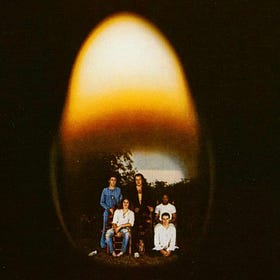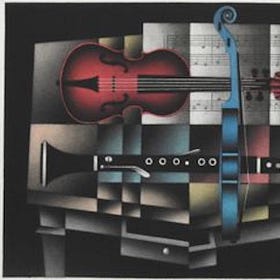Re-Igniting Fusion: Rie Tomimatsu
Most of us associate our generation with the music that was popular when we were in high school or college. In my high-school years, the charts were regularly defiled by stuff like “Raindrops Keep Fallin’,” “Muskrat Love,” “Billy Don’t Be a Hero,” and Barry Manilow (pick a nightmare).
I felt the music gods were royally screwing over my generation.
It’s hard to grow up in the era of the Beatles, Cream, Jefferson Airplane, the Doors and Hendrix, and not be disappointed with what would follow. I was a kid when those groups were at their height, so I can’t claim them as my generation’s music. But they set a standard that was hard to meet, and few people in fact met it. So, my high school years brought the cringe.
Except for a stroke of luck, college might have brought more of the same. That was the era of soft-rock — Eagles, Jackson Brown, etc. It was as though the ’60s had left the popular music world spent and exhausted. There were also Springsteen and Disco, but they did nothing for my soul. It was the background music for our parties, but I never found any of it merited listening to on my own.
I’ve since reassessed Disco, and I think I misjudged it at the time. That’s another story!
The stroke of luck was that for my freshman year of college, I was assigned to a dorm full of musicians, and they lived in an entirely different world. It was a new world to me, filled with kinds of music I had never imagined (not to mention the exotic forms of chemical entertainment!) It shook me up, opened my ears, and rewired my brain.
Many of my dorm-mates and their friends were co-registering for classes at Berklee College of Music or jamming with Berklee students. A couple of them dragged me along to recitals by various jazz luminaries, including Keith Jarrett and Gary Burton. Only many years later did I understand just how lucky I was to dip my toes into those waters. I only wish I had done more.
The ascendant musical movement of the time was jazz fusion, or jazz-rock fusion, usually known simply as “fusion.” I have written several pieces about some of its major players:
What Was On Your College-era Soundtrack?
“Fusion” generally refers to mergers between different styles or genres (it can even refer to cuisine). In the music world, the term usually refers to the collision of jazz and rock that happened in the 1970’s and on into the mid 1980’s. It combined the creativity and virtuosity of jazz with the energy …
What Was on Your College Soundtrack?
In Part 1, I took a look at some of the key players who smashed jazz and rock together, creating something with a whole new energy and dynamism. Fusion: When Music Went Nuclear (Part 1) The initial forays into fusion were led by people from the highest echelon of jazz, starting with Miles Davis and several of the musician…
The Music That Turned My World Inside Out
This is the third in a series on “fusion,” the intersection where rock collided with jazz starting in the late 1960s. The first two articles are here and here: Fusion: When Music Went Nuclear (Part 1) The explosive merger of jazz and rock, featuring Miles Davis, Chick Corea,…
Fusion was a force for less than a decade, ending almost exactly at the time I graduated from college. It had crossed over into mainstream popularity around 1974–76, with Jeff Beck, Stanley Clarke and Herbie Hancock all putting out albums that got fairly high on the main rock or pop charts. And then it faded away, preserved mainly in our precious collections of vinyl.
Well, it took around 35 years, but fusion is being re-ignited. It’s a tiny spark, only a handful of musicians. I have written about one of them, the incomparable drummer Senri Kawaguchi, who has done several world tours with her fusion ensemble:
Jazz and Fusion greats (5): Senri
Senri Kawaguchi started shaking things up when she was 12. When she was 13, Drummerworld named her one of the 500 best drummers of all time. At age 24, she has already headlined several international tours and done session work with some of the top jazz and fusion musicians in the world. She gives master classes to other professional-level drummers. …
This article focuses on another musician, a guitarist who cut her teeth on heavy metal, winning recognition as a ferocious shredder and a technical wizard. She has shifted her focus onto a new style which she is inventing as she goes, one which is heavily fusion-influenced.
Rie Tomimatsu (aka Rie aka Suzaku) was trained in classical guitar as a child, but found herself drawn to the sounds of jazz, metal and fusion. She struggled to find bandmates who liked these music genres and were willing to play with a girl. Eventually, she founded her own bands and record label. At 38, she is now one of the “senior statesmen” of modern electric guitar.
As I alluded to, she has lately shifted her focus from rock to fusion. She has not said it directly, but it seems likely that this is simply because fusion presents more of a technical challenge. In any case, whatever the reasons, it looks like a good choice for her. She has fronted several high-octane bands as well as collaborating with many of the top musicians in Japan on one-time projects.
“Last Pirates” and “Jamaican Dream” (Originals, Jan 2022)
Rie a.k.a. Suzaku (G)
深井麻梨恵 Marie Fukai (Kb)
星野李奈 Rina Hoshino (B)
佐藤 奏 Kanade Sato (Dr)
It would be easy to call this a supergroup if two of the members (Fukai and Sato) were not so young — they are barely out of their teens today. Hoshino guested with Rie several times, but more recently signed on full time with Tokyo Groove Jyoshi, replacing Juna Serita, who in turn has joined Rie’s band to form Muses (more on them below).
These two pieces come from opposite ends of the spectrum. “Pirates” is hard-driving, fast and technical, with shimmering harmonies between Rie’s guitar and Fukai’s keyboards. The Middle Eastern scales give it an exotic, mysterious feel. “Dream” is slower and more playful, with a distinct Caribbean party vibe. Both songs merit an extra listen just to focus on Sato’s musical, understated drum lines.
“Ice World” (Original, June 2022)
Rie a.k.a. Suzaku (G)
池尻喜子 Yoshiko Ikejiri (Kb)
池尻晴乃介 Harunosuke Ikejiri (B)
佐藤 奏 Kanade Sato (Dr)
This piece exemplifies Rie’s approach to fusion — it is much more melodic and approachable than most 70s fusion, closer to Return to Forever than to Mahavishnu Orchestra. It is also deceptively technical — the romantic, almost sentimental songwriting is underpinned by storms of notes that create the effect of thundershowers.
The Ikejiris are wife and husband, keyboardist and bassist. They perform and record as Ikejirike, as well as collaborating with many of the top jazz and progressive metal artists in Japan. Sato-san turns in yet another high-touch drum solo, managing as usual to look like she’s thinking about what to have for dinner.
…….
“Breaking the Limit” (Original, March 2023)
Rie aka Suzaku, Guitars
池尻喜子(Yoshiko Ikejiri, Keys)
星野李奈 (Rina Hoshino, Bass)
川口千里 (Senri Kawaguchi, Drums)
Another supergroup configuration, this time featuring the aforementioned Senri on drums. The drive in this song makes it the closest thing to “typical” 70’s fusion out of the four selections here.
Cause We’ve Ended as Lovers (Jeff Beck Cover)
Muses:
Rie a.k.a. Suzaku (G)
深井麻梨恵 Marie Fukai (Kb)
芹田ジュナ Juna Serita (B)
佐藤 奏 Kanade Sato (Dr)
Jeff Beck was one of the few rock musicians who successfully crossed over into fusion — most of the others came from the jazz or classical worlds. His success at doing so owes itself, I believe, to his incredible technical prowess and his endless inventiveness. He did something else that many of the fusion musicians couldn’t do: He broke through on the main Billboard charts. That probably owes itself to his having come from rock with an understanding of the sensibilities of rock and pop fans.
Rie is one of the few guitarists with the skills and feel to take on something like Beck’s “Blow by Blow” album and actually add a little mustard while keeping the original emotional ambience. “Cause We’ve Ended as Lovers” is probably the best-known piece from that album. This clip is from an entire evening devoted to covering Beck’s compositions.
Juna Serita (known as The Princess of Funk) replaced Rina Hoshino in Rie’s band, and they collectively adopted the name “Muses” to emphasize that it’s not just one star with backing musicians. (Hoshino, meanwhile, traded places with Serita, joining the latter’s previous group, Tokyo Groove Jyoshi.)
…….
I would love your thoughts and comments, and suggestions for future articles. Thank you!







